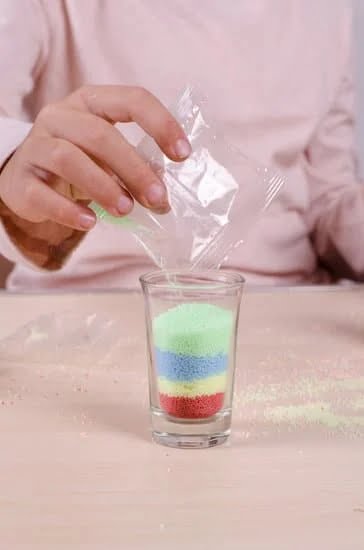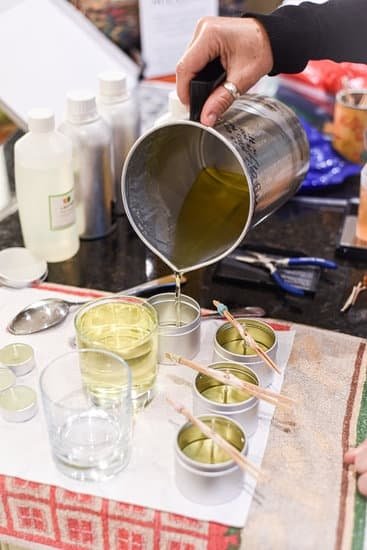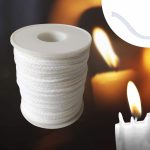Are you looking to create beautifully scented candles using safe essential oils for candle making? Choosing the right essential oils is crucial not only for achieving the desired scent but also for ensuring the safety of your candles. In this article, we will explore the importance of using safe essential oils in candle making and highlight potential risks associated with using unsafe essential oils.
Essential oils are highly concentrated natural extracts that are widely used for their aromatic and therapeutic properties. They are derived from various plant materials through processes such as steam distillation, cold pressing, or solvent extraction. Understanding the different types of essential oils and their extraction process is essential for selecting safe options for candle making.
When it comes to candle making, safety should always be a top priority. Not all essential oils are suitable for use in candles, and some may pose potential hazards or risks when heated.
It is important to carefully consider safety considerations when incorporating essential oils into candle making to ensure a pleasant and safe experience for users. Throughout this article, we will discuss specific safe essential oils that are suitable for candle making and provide tips for choosing the best options.
Understanding Essential Oils
Essential oils are highly concentrated plant extracts that have been used for various purposes, including aromatherapy, skincare, and even culinary applications. These natural oils are derived from different parts of plants through processes like steam distillation, cold pressing, or solvent extraction. With their aromatic and therapeutic properties, essential oils have gained popularity in candle making for adding unique scents to the candles.
When it comes to understanding essential oils, it’s important to note that not all essential oils are safe for candle making. Some essential oils may contain components that can pose health risks when heated or may not blend well with the wax. Therefore, it’s crucial to educate oneself about the properties and uses of different essential oils before incorporating them into candle-making projects.
To ensure safety in candle making and achieve desired results, here are some key points about understanding essential oils:
- Essential oils come in a wide range of scents, from floral and citrusy to earthy and woody.
- Certain essential oils have specific properties such as being antiseptic, calming, or uplifting.
- Different extraction methods yield various types of essential oils, including absolutes, resins, and CO2 extracts.
Safety Considerations for Candle Making
When it comes to candle making, safety should always be a top priority. This includes not only following proper procedures for handling hot wax and open flames but also ensuring that the essential oils used in the candles are safe. It’s important to understand that not all essential oils are suitable for candle making, and some can even pose potential risks when heated or burned.
One of the key considerations for safe essential oils for candle making is their flash point. The flash point of an essential oil is the temperature at which it can ignite if exposed to an open flame. Essential oils with lower flash points may present a higher risk of causing a fire when used in candles. Additionally, certain essential oils may release harmful chemicals when heated, leading to indoor air pollution.
To ensure the safety of your homemade candles, it’s important to carefully research and select essential oils that are considered safe for candle making. Some popular choices include lavender oil, lemon oil, and eucalyptus oil, among others. These essential oils not only offer pleasant scents but also have relatively high flash points and are known to be safe for use in candles.
In addition to choosing safe essential oils, it’s crucial to adhere to recommended usage rates and guidelines provided by reputable sources such as fragrance suppliers or aromatherapy organizations. Overloading a candle with too much essential oil can lead to poor burning characteristics and potential safety hazards. By carefully considering these safety considerations, you can enjoy the benefits of creating beautiful and fragrant candles using safe essential oils for candle making.
| Safe Essential Oils | Properties/Benefits |
|---|---|
| Lavender Oil | Calming and relaxing scent |
| Lemon Oil | Fresh and invigorating aroma |
| Eucalyptus Oil | Clean and uplifting fragrance |
Safe Essential Oils for Candle Making
When it comes to making candles with essential oils, it is crucial to prioritize safety. Using safe essential oils not only ensures a pleasant and aromatic experience but also avoids potential health risks associated with unsafe oils. It’s important to understand the properties of different essential oils and how they can affect the quality and safety of your candles.
Essential oils are natural extracts from plants that are commonly used for their aromatic and therapeutic properties. These concentrated liquids are derived through processes such as steam distillation or cold pressing, capturing the essence of the plant’s fragrance and beneficial compounds. However, not all essential oils are suitable for candle making, as some may contain allergens or impurities that can pose health hazards when heated.
When selecting essential oils for candle making, it is important to choose those that are considered safe for use in this application. Some safe essential oils for candle making include:
- Lavender: Known for its calming properties, lavender essential oil adds a soothing scent to candles.
- Peppermint: With its invigorating aroma, peppermint essential oil is a popular choice for creating energizing candles.
- Lemon: Lemon essential oil provides a fresh and citrusy scent that can uplift the mood when used in candles.
These safe essential oils not only offer pleasant fragrances but also boast various aromatherapy benefits when incorporated into candles. It’s important to ensure that the essential oils you use are of high quality and free from any harmful additives or contaminants. By prioritizing safety in choosing essential oils for candle making, you can enjoy the benefits of aromatherapy while creating a relaxing ambiance in your space.
Choosing the Right Essential Oils
When it comes to choosing the right essential oils for candle making, it is important to prioritize safety and quality. Not all essential oils are suitable for use in candles, as some may pose health risks or produce undesirable effects when burned. Therefore, it is crucial to select safe essential oils for candle making to ensure a positive and enjoyable experience.
Tips for Selecting Safe Essential Oils
When choosing essential oils for candle making, it is recommended to opt for high-quality, pure oils that are specifically labeled as safe for use in candles. Look for essential oils that are free from synthetic additives and contaminants, as these can affect the quality and safety of the final product. Additionally, consider purchasing essential oils from reputable suppliers who prioritize transparency and provide detailed information about their products.
Factors to Consider
Consider the scent profile and characteristics of different essential oils when selecting them for candle making. Some essential oils have strong aroma profiles and may overpower other scents when used in blends, while others have subtle fragrances that work well as base notes.
It’s also important to consider any potential sensitivities or allergies that you or others may have to certain essential oils. Furthermore, take into account the specific purpose of your candles and choose essential oils that align with the desired atmosphere or benefits you wish to achieve.
Ensuring Safety and Quality
Prioritize safety and quality when selecting essential oils for candle making by conducting thorough research on each oil’s properties and potential effects. Avoid using essential oils known to be skin irritants or those with known safety concerns when heated.
Always follow recommended guidelines for dilution rates and usage levels provided by reputable sources such as aromatherapists or industry associations. Additionally, consider incorporating safe dilution methods such as blending with carrier oils or utilizing pre-diluted essential oil blends specifically formulated for candle making.
By carefully considering these factors and prioritizing safety and quality, you can confidently choose the right essential oils for your candle making projects while creating a pleasing and safe aromatic experience.
Tips for Blending Essential Oils
Blending essential oils for candle making is a creative and enjoyable process that allows for the customization of scents to suit personal preferences. However, it’s important to approach blending with caution to ensure both safety and effectiveness. Here are some tips for blending essential oils for candle making.
Understanding Fragrance Notes
When blending essential oils for candles, it’s helpful to understand the concept of fragrance notes. Essential oils are typically categorized as top, middle, or base notes based on their evaporation rate and aroma characteristics. Top notes are lighter and more volatile, while base notes are heavier and longer-lasting.
Middle notes serve as a bridge between the two. When blending, it’s advisable to use a combination of all three types of notes to create a well-rounded fragrance that evolves over time when the candle is burning.
Start With Small Batches
To avoid wasting essential oils and potentially creating an overpowering or unpleasant scent, start with small batches when experimenting with blends. This allows for testing the aroma and adjusting the combination if necessary before committing to a larger batch.
Consider Scent Profiles
When selecting essential oils for blending, consider the scent profiles and how they complement each other. For example, citrus-based oils such as lemon or orange can provide a refreshing top note, while floral scents like lavender or jasmine make lovely middle notes. Spices such as cinnamon or clove add warmth as base notes. Experimenting with different combinations can lead to unique and harmonious blends that enhance the overall candle experience.
By following these tips for blending safe essential oils for candle making, you can create unique scents that not only elevate your space but also promote a sense of well-being through aromatherapy benefits. Keep in mind that it’s important to prioritize safety when working with essential oils by thoroughly researching their properties and adhering to recommended dilution ratios for use in candles.
Best Practices for Using Essential Oils in Candle Making
When it comes to candle making, using safe essential oils is of utmost importance. Essential oils are highly concentrated and potent, and not all of them are suitable for use in candles. Certain essential oils can pose safety risks when heated or burned, so it’s crucial to choose the right ones for candle making. By selecting safe essential oils, you can ensure that your candles are both aromatic and free from potential hazards.
One of the safest essential oils for candle making is lavender oil. Known for its calming and soothing properties, lavender oil is a popular choice for candles intended to promote relaxation and stress relief. Another safe option is citrus essential oils such as lemon or sweet orange oil, which can add a refreshing and uplifting scent to your candles without posing any known risks when used properly.
In addition to lavender and citrus oils, peppermint oil is also considered safe for candle making. However, it’s important to use it sparingly due to its strong fragrance and potential skin sensitivity. These three essential oils are just a few examples of safe options for candle making, but there are plenty of others to explore depending on your desired scents and effects.
When incorporating essential oils into candle making, it’s important to adhere to best practices for safety. This includes following recommended dilution guidelines, testing your oil blends before finalizing a recipe, and ensuring proper ventilation during the candle-making process. By being mindful of these safety considerations and choosing safe essential oils, you can create beautiful and fragrant candles without compromising on health or well-being.
| Safe Essential Oils | Description |
|---|---|
| Lavender Oil | Calming and soothing aroma; promotes relaxation |
| Citrus Oils (e.g. Lemon or Sweet Orange) | Refreshing and uplifting scent; safe when used properly |
| Peppermint Oil | Strong fragrance; should be used sparingly due to potential skin sensitivity |
Essential Oil Candle Making Recipes
Creating your own candles with safe essential oils can be a rewarding and enjoyable hobby. Not only do you get to customize the scent of your candles, but you also have the assurance that you are using safe ingredients. In this section, we will provide step-by-step instructions for making candles with safe essential oils, as well as share a variety of candle recipes using different essential oils.
When making candles with essential oils, it is important to choose high-quality, pure oils that are safe for use in candle making. Some popular choices for safe essential oils include lavender, citrus oils such as lemon or orange, peppermint, and eucalyptus. These essential oils not only offer delightful scents but also have properties that can enhance the ambiance of your space.
To create a basic essential oil candle, you will need soy wax flakes, wicks, a heat-resistant container, and of course, your chosen safe essential oil. Start by melting the soy wax in a double boiler or microwave until it reaches around 185°F.
Once melted, remove it from the heat and allow it to cool slightly before adding in your essential oil. It is generally recommended to use around 1 ounce of essential oil per pound of wax for a medium scent strength.
For those looking to get more creative with their candle making, here are a few recipe ideas using safe essential oils:
- Relaxing Lavender Vanilla Candle: Combine lavender and vanilla essential oils for a calming and soothing aroma
- Energizing Citrus Mint Candle: Blend citrus oils such as lemon or orange with peppermint for an invigorating and refreshing scent
- Fresh Eucalyptus Rosemary Candle: Mix eucalyptus and rosemary essential oils for a clean and revitalizing fragrance
Experiment with different combinations of safe essential oils to find the perfect scent for your homemade candles. Always remember to follow proper safety guidelines when working with hot wax and essential oils to ensure an enjoyable and hazard-free candle making experience.
Conclusion
Creating candles with safe essential oils is not only important for the quality of the final product, but also for the safety of those using the candles. It is crucial to understand that certain essential oils can pose potential risks when used in candle making, and therefore, careful consideration should be given to the selection of safe essential oils.
When exploring safe essential oils for candle making, it is essential to choose those that are known for their non-toxic and non-irritating properties. Some examples of safe essential oils for candle making include lavender, citrus (such as lemon or orange), and peppermint. These oils not only provide delightful scents but are also considered safe for use in candles.
It’s important to remember that not all essential oils are appropriate for candle making. Some essential oils may have adverse effects when heated or burned, which can release harmful compounds into the air. Therefore, conducting thorough research and seeking guidance from reputable sources is recommended when selecting essential oils for candle making projects. By prioritizing safety and choosing the right essential oils, crafters can enjoy creating beautifully scented candles without compromising on health and well-being.
Additional Resources
In conclusion, the use of safe essential oils for candle making cannot be overstated. The potential risks of using unsafe essential oils in candles range from hazards to health risks, making it crucial to prioritize safety when choosing essential oils for candle making. By understanding the properties and benefits of safe essential oils, and considering safety considerations and best practices for their use in candle making, individuals can enjoy the aromatherapeutic benefits of candles without compromising their well-being.
It is important to note that not all essential oils are suitable for use in candle making, as some may pose health risks or safety hazards when heated or burned. Therefore, it is imperative to carefully choose safe essential oils that are specifically recommended for candle making. These safe essential oils not only offer pleasing scents but also have properties that make them ideal for creating high-quality and beneficial candles.
In summary, by following the tips for choosing the right essential oils, blending them effectively, and using best practices for incorporating them into candle making, individuals can create beautiful and aromatic candles with safe essential oils. This ensures a delightful sensory experience while promoting a safe and healthy environment. For further information on safe essential oils and candle making techniques, readers are encouraged to explore the additional resources provided for more in-depth knowledge on this subject.
Frequently Asked Questions
What Essential Oils Are Safe in Candles?
Essential oils that are safe in candles include lavender, peppermint, lemon, eucalyptus, and orange. It’s important to use high-quality essential oils specifically designed for candle making to ensure safety.
Are All Fragrance Oils Safe for Candle Making?
Not all fragrance oils are safe for candle making. Some may contain chemicals or additives that can be harmful when burned. It’s important to use fragrance oils specifically formulated for candle making to ensure safety.
What Is the Best Carrier Oil for Candles?
The best carrier oil for candles is typically a natural, clean-burning oil such as soybean oil or coconut oil. These oils help to evenly distribute the fragrance and provide a longer-lasting scent when used in candles.
It’s important to choose a carrier oil that is compatible with the essential or fragrance oils being used in the candle-making process.

Welcome to my candle making blog! In this blog, I will be sharing my tips and tricks for making candles. I will also be sharing some of my favorite recipes.





